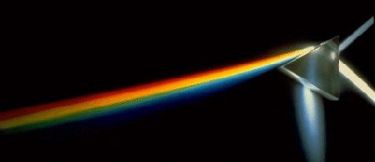A page from the "Causes of Color" exhibit...
What were early studies of color?

Color theory is a human construct. We need ways to define what we mean by color, and how colors can be ordered, related to each other, and adjusted to become new colors. Color theory attempts to meld together the facts we have about color in a way that gives us common ground to discuss and use colors. Early theories of color were pure speculation. Eventually, with more data at hand, the theories began to mirror and explain how the brain really perceives color. Ewald Hering (1834-1918) devised the first accurate theory of color vision.
Color is a perception, a response of the brain to data received by the visual systems. Just as artificial flavors evoke a similar smell to real foods, or as artificial sugar stimulates our sense of sweetness, so different combinations of light can be perceived as the same "color" (see What is color?).
What is real is that objects emit light in various mixtures of wavelengths. Our minds perceive those wavelength mixtures as a phenomenon we call color, and this perception creates questions that color theory tries to explain.
Early studies of the nature of color
|
In Ancient Greece, Aristotle developed the first known theory of color. He postulated that God sent down color from the heavens as celestial rays. He identified four colors corresponding to the four elements: earth, fire, wind, and water. |
 
Leonardo da Vinci was the first to suggest an alternative hierarchy of color. In his Treatise on Painting, he said that while philosophers viewed white as the "cause, or the receiver" of colors and black as the absence of color, both were essential to the painter, with white representing light, and black, darkness. He listed his six colors in the following order: white, yellow (earth), green (water), blue (air), red (fire), and black. |

The detailed understanding of the science of color began in 1666, when Isaac Newton, using two prisms, observed that white light was composed of all the colors of the rainbow, and could be identified and ordered. Newton first used the word "spectrum" for the array of colors produced by a glass prism. He recognized that the colors comprising white light are "refracted" (bent) by different amounts and he also understood that there is no "colored" light, the color being in the eye of the beholder. Instead, there is merely a range of energies - or the proportional frequencies and the inverse wavelengths. Newton assigned seven colors to the spectrum in an analogy to the musical scale.




